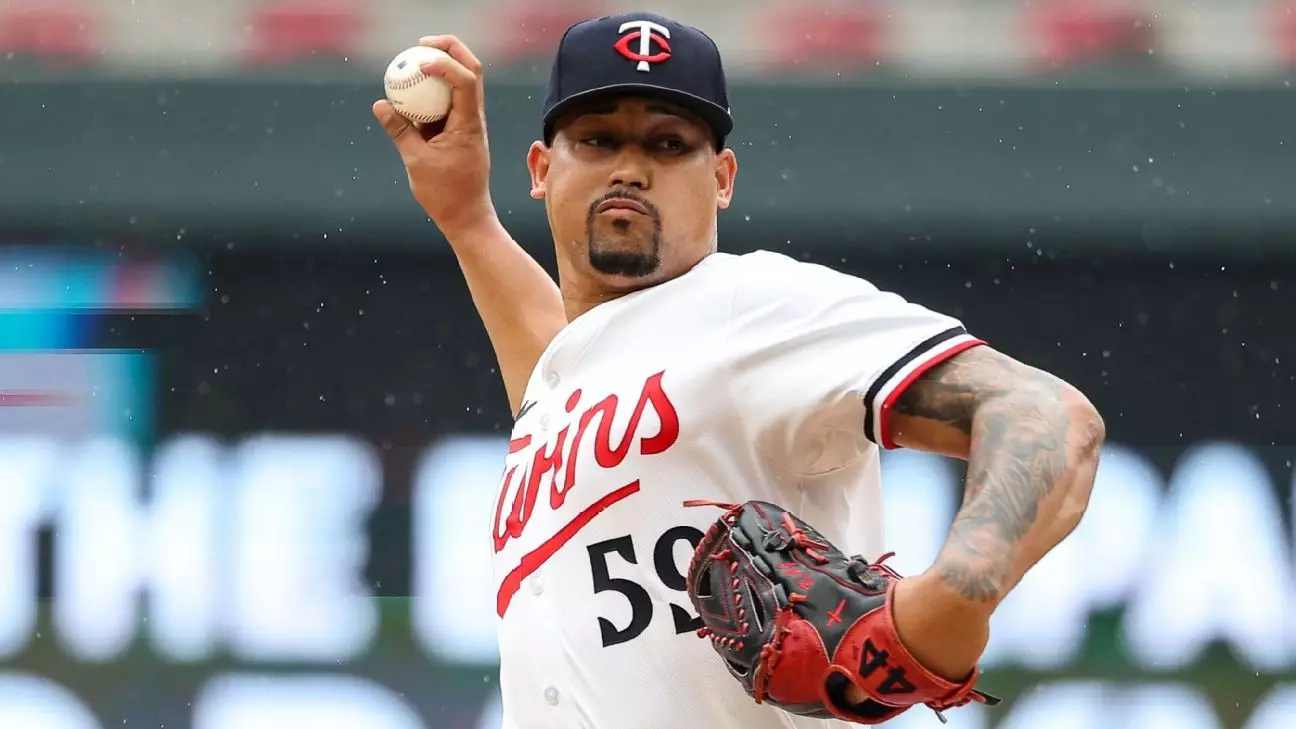In an era where baseball’s midseason trade market often dictates the postseason landscape, the Philadelphia Phillies demonstrated exceptional resolve and strategic foresight by acquiring Jhoan Duran from the Minnesota Twins. This trade underscores an organization unwilling to settle for mediocrity, especially when opportunities present themselves to elevate competitive prospects. The Phillies aggressively sacrificed promising young talent—notably catcher Eduardo Tait and rookie pitcher Mick Abel—highlighting their conviction that adding a top-tier closer is a decisive step toward championship contention. Duran’s arrival signifies Philadelphia’s prioritization of bullpen stability, a critical determinant in the unpredictable landscape of postseason baseball.
The Phillies’ choice to invest heavily in Duran reflects a broader philosophy rooted in maximizing the value of high-leverage assets. By trading away prospects ranked among the best within their farm system, management clearly believes that short-term success justifies the current investment. Such a move also underscores the team’s confidence in maintaining a competitive roster that can push for a deep playoff run, especially with the postseason just a few months away. This commitment to winning now—rather than holding prospects for future seasons—is emblematic of a club that recognizes its window to capitalize on a potent core, especially with key players nearing free agency.
Addressing a Critical Need in the Phillies’ Bullpen
Philadelphia’s bullpen issues have been evident throughout the season. Despite having a formidable lineup featuring stars like Bryce Harper and Kyle Schwarber, their relievers have struggled with consistency. The team’s 16 blown saves, tied for the fourth most in the National League, highlight vulnerabilities that have kept the Phillies from asserting dominance. The absence of a reliable closer has hampered their ability to seal wins—a weakness that often dictates postseason fate, where every save can be the difference between elimination and advancement.
Adding Duran, known for his overpowering fastball averaging over 100 mph and an equally impressive curveball, provides the Phillies with a dominant late-inning weapon. His reputation as one of baseball’s best closers is well-deserved, and the move signals Philadelphia’s intent to solidify their closing role against tough opponents. Manager Rob Thomson’s confidence in Duran’s ability to transform the bullpen into a formidable force is noteworthy. It’s an acknowledgment that the Phillies see dramatic improvement in their late-game situation as a pivotal factor in pushing their season forward.
The team’s existing relievers, including Jordan Romano and Jose Alvarado, faced setbacks—Romano’s struggles and Alvarado’s suspension—highlighting that the bullpen needed reinforcement. While Alvarado’s impending return after an 80-game suspension offers some hope, his ineligibility in the playoffs underscores the urgency for a reliable arm like Duran to step in immediately. The Phillies are betting that their investment will pay dividends in clutch moments, especially in high-pressure postseason encounters.
Controlling the Narrative: The Cost of Victory
The price paid for Duran—top prospects Tait and Abel—reflects a broader trend in baseball where teams are willing to part with premium assets to secure immediate impact players. For Philadelphia, this wasn’t about rentals; the commitment extends well beyond this season, with Duran under team control until after 2027. This long-term contractual perspective indicates a calculated risk, but one that management believes aligns with their championship ambitions.
Dombrowski’s proven record of boldly trading prospects for proven talent is reaffirmed here. His willingness to give up high-profile prospects—like the highly regarded Andrew Painter in previous deals—shows a clear philosophy: winning now often requires sacrifices. The Phillies’ focus on acquiring a dominant closer demonstrates their understanding that bullpen strength can serve as the final piece needed to convert regular-season dominance into postseason success.
In a league where the margins are razor-thin, adding a player like Duran can be the differentiator. The Phillies are acknowledging this reality by investing heavily in their bullpen, even at the expense of future prospects. This move sends a strong message within the clubhouse and to their competitors: Philadelphia is all-in on this season, aiming to maximize their favorable roster and competitive window.
Implications and Industry Perspective
The move also reflects the shifting landscape of baseball strategies, where aggressive midseason transactions are becoming the norm among postseason contenders. It emphasizes that with the right resources, teams are willing to pivot quickly to address weaknesses—sometimes at considerable cost. The Phillies’ choice not to trade highly regarded young pitcher Andrew Painter indicates a reluctance to deplete their future core, revealing a nuanced approach balancing present needs with long-term stability.
Moreover, the broader industry perception suggests that Philadelphia views Duran as the final piece of their puzzle, especially with their roster aging. Key contributors like Schwarber and Realmuto are nearing free agency, intensifying the urgency to maximize this year’s window. The Phillies’ willingness to pay a premium encapsulates their belief that the championship pursuit is worth the risk, both in prospects and immediate results.
By making this bold acquisition, Philadelphia sends a potent message: they are serious contenders, ready to challenge the status quo and seize the moment. Whether this gamble pays off remains to be seen, but the underlying confidence and strategic calculation make it a defining move of this baseball season.

